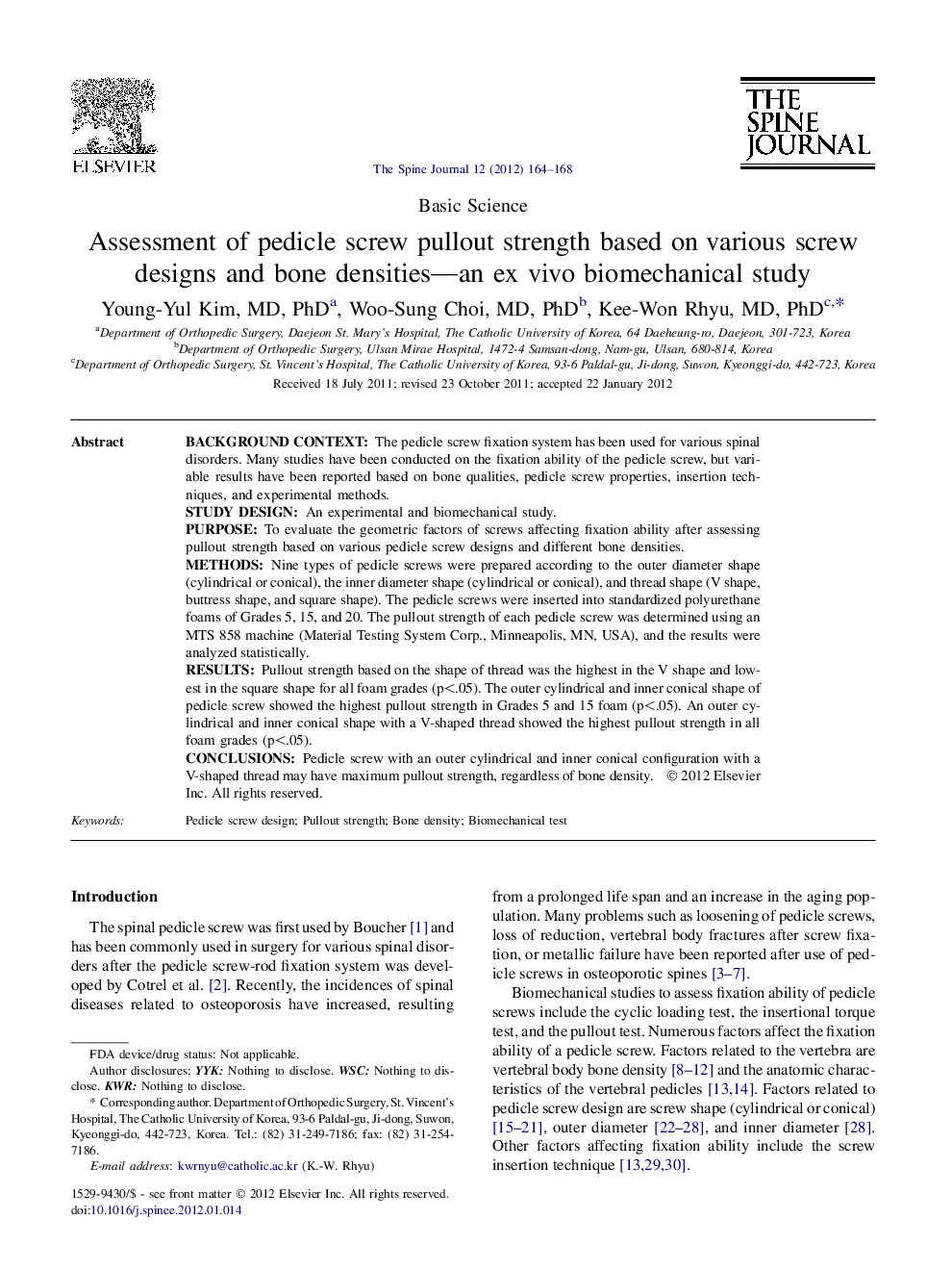| Article ID | Journal | Published Year | Pages | File Type |
|---|---|---|---|---|
| 4098552 | The Spine Journal | 2012 | 5 Pages |
Background contextThe pedicle screw fixation system has been used for various spinal disorders. Many studies have been conducted on the fixation ability of the pedicle screw, but variable results have been reported based on bone qualities, pedicle screw properties, insertion techniques, and experimental methods.Study designAn experimental and biomechanical study.PurposeTo evaluate the geometric factors of screws affecting fixation ability after assessing pullout strength based on various pedicle screw designs and different bone densities.MethodsNine types of pedicle screws were prepared according to the outer diameter shape (cylindrical or conical), the inner diameter shape (cylindrical or conical), and thread shape (V shape, buttress shape, and square shape). The pedicle screws were inserted into standardized polyurethane foams of Grades 5, 15, and 20. The pullout strength of each pedicle screw was determined using an MTS 858 machine (Material Testing System Corp., Minneapolis, MN, USA), and the results were analyzed statistically.ResultsPullout strength based on the shape of thread was the highest in the V shape and lowest in the square shape for all foam grades (p<.05). The outer cylindrical and inner conical shape of pedicle screw showed the highest pullout strength in Grades 5 and 15 foam (p<.05). An outer cylindrical and inner conical shape with a V-shaped thread showed the highest pullout strength in all foam grades (p<.05).ConclusionsPedicle screw with an outer cylindrical and inner conical configuration with a V-shaped thread may have maximum pullout strength, regardless of bone density.
